Interview
Interview: Martha Haversham
In conversation with Essex UK based image maker Martha Haversham who originally graduated with a degree in dance.
Can you talk about the influences upon your work?
Essentially, I am influenced by those who live life without want, who are incredibly self-sufficient, who have delved deep into aesthetics, wit and imagination. I am attracted to the strength of those personalities, their sense of purpose and the work they create.
They tend to be sensitive, articulate and very funny people to be around; some are dead unfortunately.
Your work uses found objects and references nature a lot. How did this working method develop?
Out of necessity. I was wearing too many hats and confusing people. Trapped in an absurdist loop, I was invisible, older, temping, bobbing about on the Ship of Fools. To escape this rubbish situation, I went out for muddy walks in my lunch break, found interesting patterns and constructed items of haute couture at my desk. I was doing these for my own benefit, sharing them on Instagram to get a reaction and improve. Quintessential outsider art. I brought my dolly to work with me, my muse, my Pippa doll. She too had her own little art project and desk, humming away, drinking her gin. We were just two good friends, having fun falling through our pay gap.
Can you talk about your process of working. How do you work, how often, is there a particular pattern?
No great histrionics, just very focused and totally charmed. I work daily, spontaneously and at speed. I find my fabrics everywhere; on the Essex salt marsh, nipping out to care for my housebound mum or doing the washing-up. I never shy away from capturing the domestic glamour of my life. I’m a good observer of the mundane, the overlooked. I’m more Alan Bennett than Tracy Emin. I store my treasures like a Victorian lady fern or seaweed collector; I feel an affinity to them, trash holds the same wonder.
I capture the resulting compositions photographically, dirt and all. These are ephemeral outfits, highly seasonal, fast fashion. A banana skin mini skirt for instance will change colour in about ten minutes. Visually, I am exploring form on a small scale, exploiting natural light and shadow to add depth and movement.
Models vary, I’m like a detached choreographer looking at bodies as just a means to an end. It’s amazing what material you can find in a recycling bin. I also model a lot of my clothes; I get to shape my ankles. For the hats, I mainly use an inherited stash of my late mother-in-law’s wonderful knitting patterns. I love their 70 year-old scent and wrinkles.
The found object always dictates the garment, accessory or hat. I will immediately see the potential. I use no background, I want nothing to distract. Over the years I have become brutal with the scissors. Arms severed; torsos chopped in half. There is a surreal quality, I can make the repulsive attractive, it’s also a matter of personal taste. I prefer visual economy; mid-Century designers such as Alvin Lustig; I was brought up to revere Norman Parkinson, Irving Penn, Richard Avedon and Erwin Blumenfeld.
How do you balance personal work with commissioned work? Your work is very distinctive. Is this both a positive and a negative in relation to being commissioned work?
There is no balance, commissioned work is awful, incredibly stressful. I cannot make any compromises to my work, when I do, the results are abhorrent. It took one great stinker in a glossy bit of nonsense to make me see sense. I still cannot look at it – it is entombed in the plastic wrapper. I get many brands asking me to do their product ‘with legs on’ and it just doesn’t work like that, not at all. Authenticity is completely shot to bits, the whole point obliterated. Collaborations without any contrivance or interference are different – two recent ones with Gigi Hadid for V Magazine and The Pink Lemonade + Nike worked a treat.
Do you find the process of creating work relaxing or therapeutic?
Both, but more than that. I believe aesthetic appreciation has the power to alter perception for the benefit of the individual and society. Nobody with an aesthetic bone in their body would drop litter on a beach. I am valuing detritus, objects of low status and exploring their worth; their cost to the planet. Individually, life is extremely challenging, but through this lens it is possible to carry an abundance of self-sufficiency. Along with a sense of humour that makes for a very rich life. Schopenhauer knew this, William Blake certainly knew this and incredibly, he died a happy bunny.
Accordingly, I believe ‘trashion’ as one of my followers termed it; is an art form of today. It literally stops you in the street and puts a massive smile on your face. My collages are merely samples. The actual creativity is illuminating the path back to our imaginative childhood brains, to a playful place I call Smallditch. My job as an artist is to hand you the keys to a stockroom brimming with far superior garments in your head, a constant source of earthly delight. I’m minded to attach a few care instructions; I’ll print off a few labels and call it a manifesto.

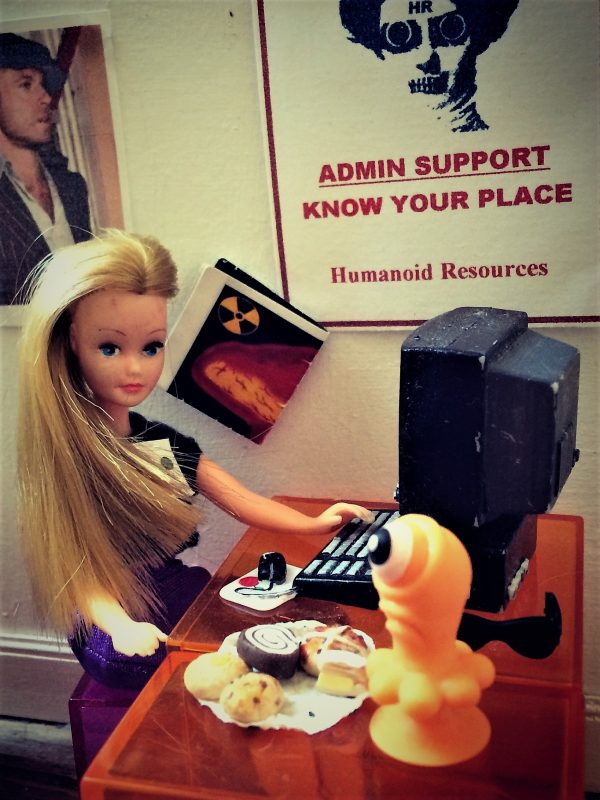
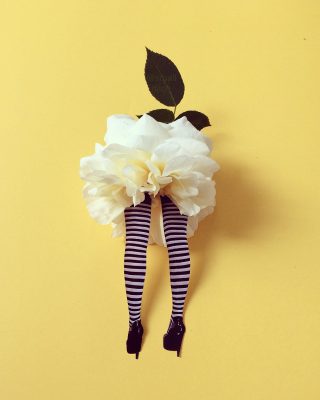
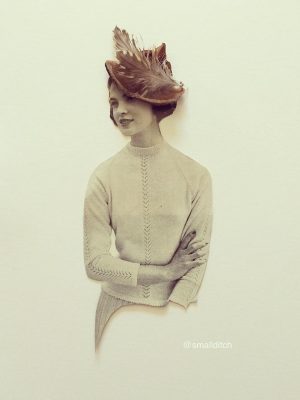
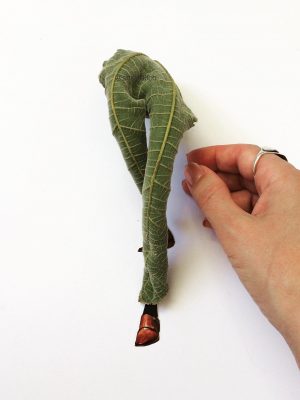
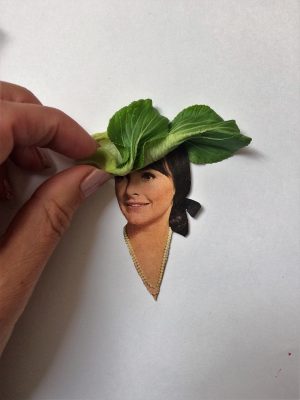
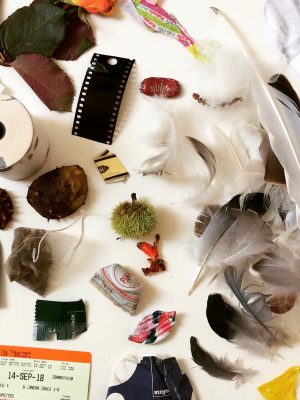
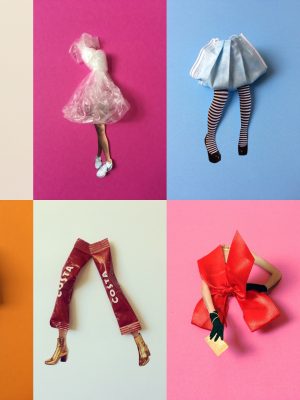
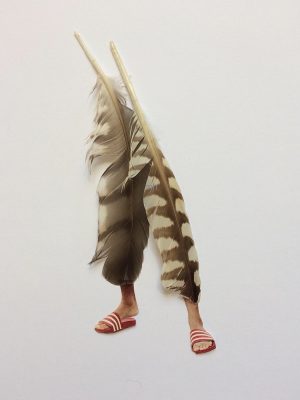
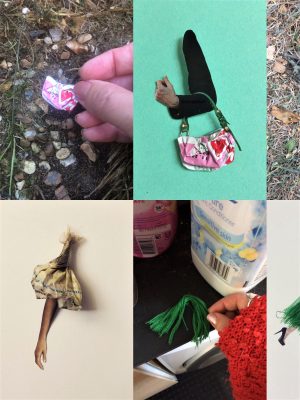
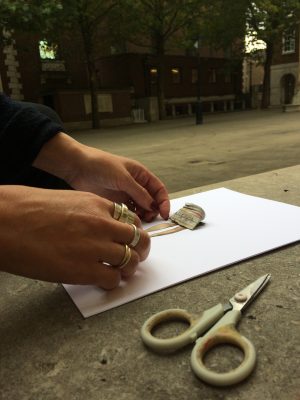
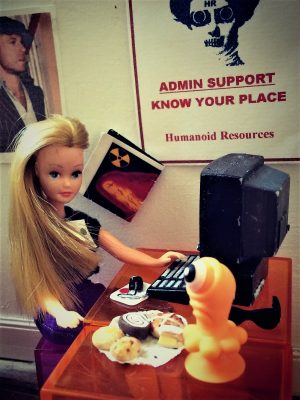
Great interview, beautiful engaging artwork.
Thanks for your comment Kathy, we are pleased you enjoyed Martha’s interview.
Thank you very much for this interview, apologies for the delay, I’ve been a bit busy out on the marsh and in the wood foraging for my fungi trousers. it was a pleasure and I hope we can do something one day.
Thanks for dropping by and we look forward to seeing your fungi trousers!
Martha is amazing and has a incredible eye! It’s so refreshing to see great artist and their work celebrated. Thank you for this interview and thanks to Martha for sharing her ‘Trashion’.
This interview was so enjoyable and as charming as Martha’s art. Her posts always bring a smile to my face without me realizing it. If we could all just see through Martha’s eyes . . .
What a fascinating artist. I’m inspired to try this myself with the tat I’ve hoarded at home and see what happens!